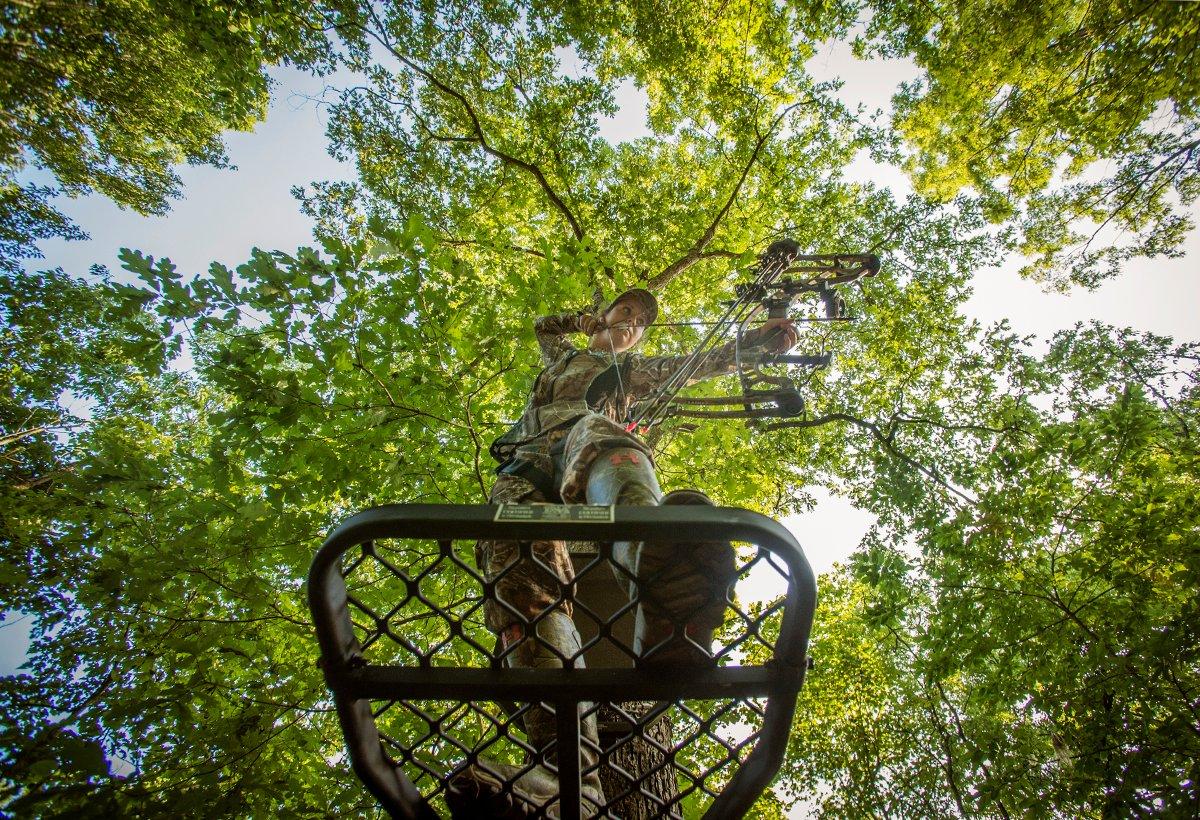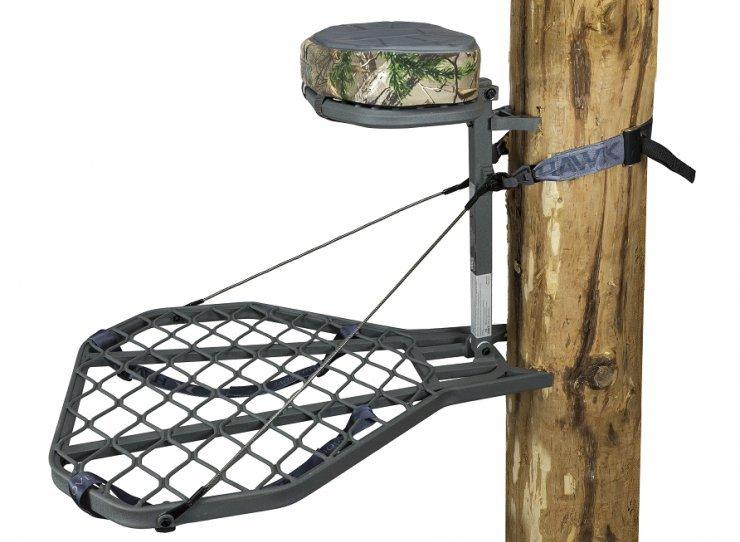Do You Prefer Hunting from a Treestand or Ground Blind?
Throughout the years, I've still-hunted, spot and stalked, hunting from blinds and utilized treestands. While I enjoy and use each of these tactics when the situation at hand calls for them, my favorite method is the treestand. There's no substitute in most scenarios.
I mostly bow hunt. But I do my fair share of gun hunting, too. Just because I like the primitiveness that a stick and string brings to the table, doesn't mean I don't like the smell of fresh-burnt gun powder on a crisp November morning.
So regardless of your weapon of choice, there are some tips and guidelines you should follow when it comes to hunting from above. Here are 15 of them.
And remember, stay safe. It's treestand safety awareness month, but treestand safety should be considered every time you're in the field.
1. Always apply a lifeline system to every treestand you have. Run a safety rope from the bottom up to above head-height when standing in the treestand. Attach a lifeline to the safety rope and a carabineer to your safety harness tether. Then, always attach the carabineer to the lifeline before climbing into the stand and stay connected until you climb back down. This way, you're safe while climbing up, stepping onto the platform and while sitting in the treestand.
2. Wear a harness. There's absolutely no reason to compromise your safety and health. You owe it to yourself. But if that isn't enough to get you to do it, you owe it to your family and friends, too. September is Treestand Safety Awareness month. But be aware all season long and anytime your dealing with them.
3. Conduct regular maintenance. Older and used stands can become compromised. Don't neglect your equipment.
4. Choose the right treestand based on your needs. Ladder, hang-on and climbing stands are all solid options. That said, know when to implement each one. These three options are best used under different situations and scenarios.
For example, ladder stands are great if you can hang them well in advance of the hunt and can haul them relatively close to the stand location. But it can be hard to shoulder them and hike a mile back into public land.
Don't Miss: 10 Treestand Tips to Keep You Safe
Climbing stands are great for public land hunts, flash hunts and anywhere you want to take down your stand after each hunt. But it can be near to impossible to find a straight tree, or a tree without large limbs, throughout much of the country.
Lastly, hang-on stands are great for just about any scenario. I prefer this type for most hunts. You aren't nearly as limited on where you can hang them as ladder and climbing stands. And I'd much rather be in the exact tree that I need to be in to capitalize on deer movements and patterns than setting up in a marginal location because it was the only tree that worked for the stand I chose.
5. The sooner the better when it comes to hanging treestands. You don't want to pressure deer. That's why I hang 80 to 90 percent of my treestands at least a month or two (preferably longer) before the season opens.
6. Know when to do a hang-and-hunt. Sometimes, it's best to wait and hang a lock-on stand the day you hunt. This way, you aren't pressuring deer by hanging the stand beforehand. I employ this tactic on a regular basis when necessary. But to do it, you need a very lightweight, silent lock-on stand and a lightweight, quiet set of climbing sticks. You must be able to hang the set in complete silence or the gig will be up before it starts.
7. Don't hang the treestand too high or low. Although I have found success in cases that I had to hang stands at 10 or 12 feet, hang a treestand too low and — in most scenarios — you defeat the purpose of hunting from a treestand. On the flipside, if you hang a stand too high, you significantly shrink the kill zone on a deer due to shot angle. I've found that 15 to 25 feet is the best range, with 20 feet being the sweet spot.
Helium XL Hang-On Treestand with Realtree Xtra Memory Foam Cushion by Hawk
8. Know when, and how, to cut shooting lanes. The last thing you want to do is cut when you shouldn't, and vice versa. It's important to utilize two people when cutting lanes. Have one person sit in the stand and the other move about cutting where necessary. It's harder to cut shooting lanes based on a singular, limited view from the ground, and you often miss things, which can also lead to cutting too little, or over trimming.
9. Don't cut too much. Cut just enough and no more. Cutting a lot of trees/limbs will alert deer to your presence and can remove cover you need to stay hidden. Sometimes cutting no lanes at all is the best route, especially if you're using the hang-and-hunt style approach.
10. Use a tree with plenty of back cover. You don't want to be skylined. Having a large enough tree trunk with plenty of limbs and cover is essential to staying hidden.
Don't Miss: How to Conceal Treestands
11. Add additional cover around the stand. In some cases, when it comes to staying hidden, this can make an already great setup near fullproof. I like to hang additional limbs (often from coniferous trees — they last longer) directly underneath and around the stand.
12. Hang stands close, but not too close, to where deer typically travel. This is especially important to note when bowhunting. Don't hang stands directly over trails. This is a recipe for failure. It's easier for deer to smell you (and where you've been) and it complicates getting a nice, ethical shot angle opportunity, too.
13. Always stay prepared and ready. Keep your bow on a Realtree EZ Hanger and stay ready. Have all necessary gear in place and ready for the moment of truth. You need to be able to safely and effectively grab your weapon, draw (or click the safety), and get on the deer in three to four seconds. Sometimes you don't have a large window to prepare for a shot.
14. Remember to compensate for shot angles. Be a steward of deer anatomy. Understand where the vitals are and know how they play in. You owe the deer you pursue a quick, clean kill.
15. Know your limits. Always continue learning and adapting. Never settle. And strive to improve your understand of deer behavior and deer hunting. Your treestand locations and strategies will continue to adapt, change and improve if you do.
Don't Miss: Shot Placement on Deer
Are you a deer hunter thirsty for knowledge? Check out our stories, videos and hard-hitting how-to's on deer hunting.








